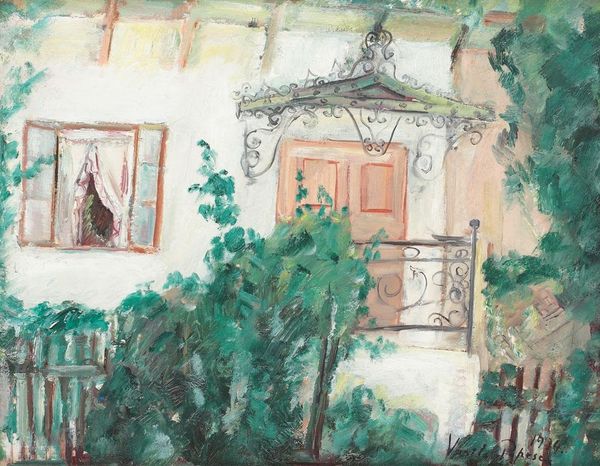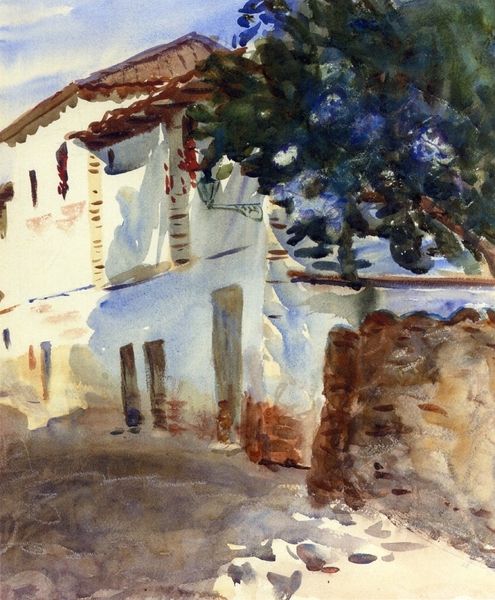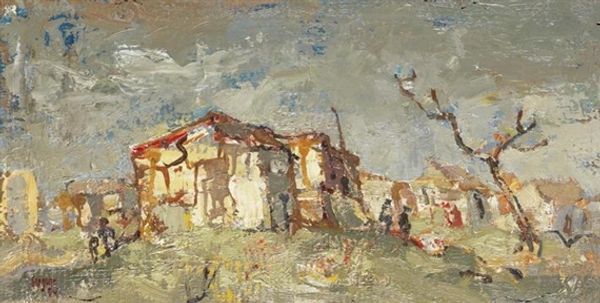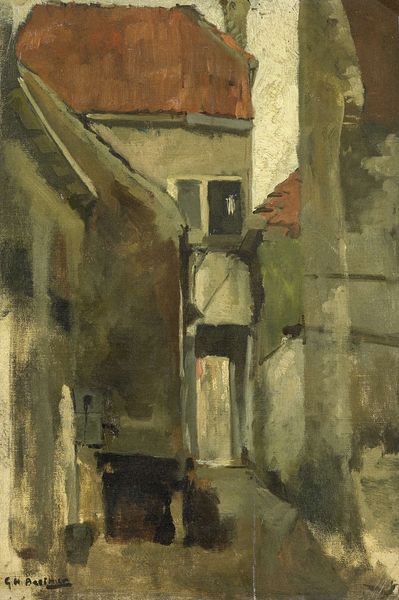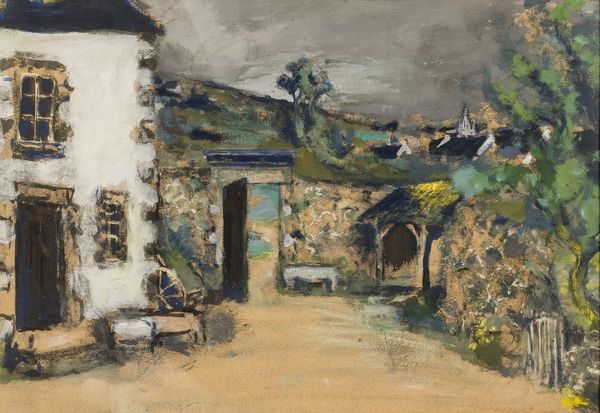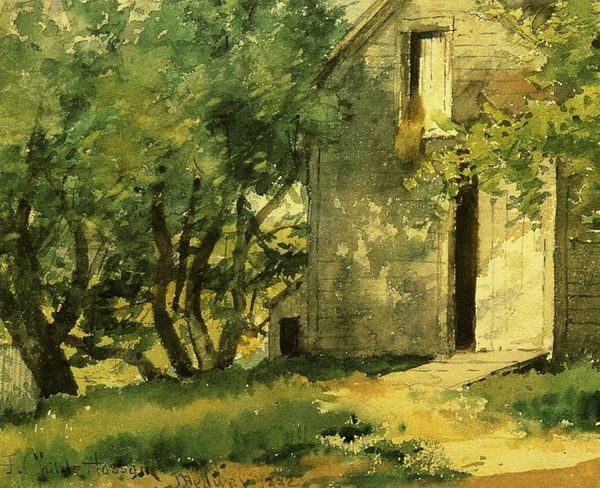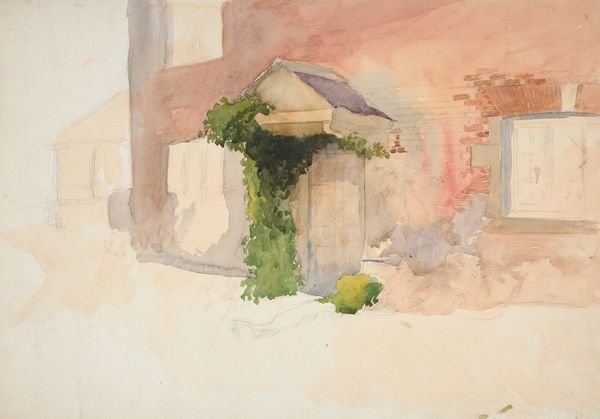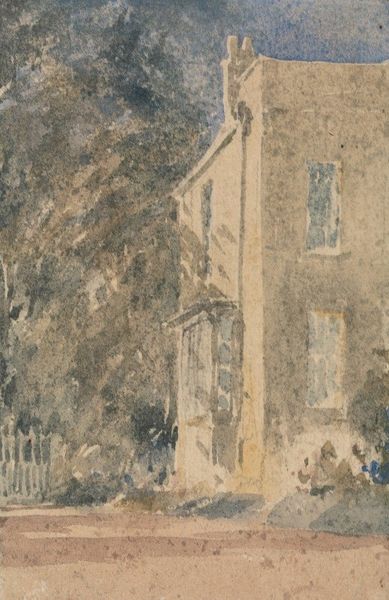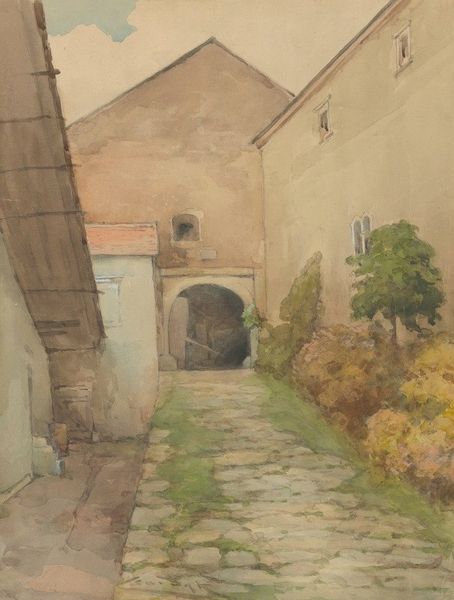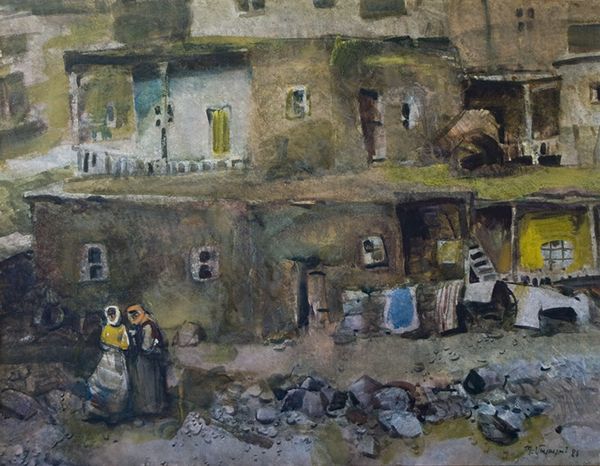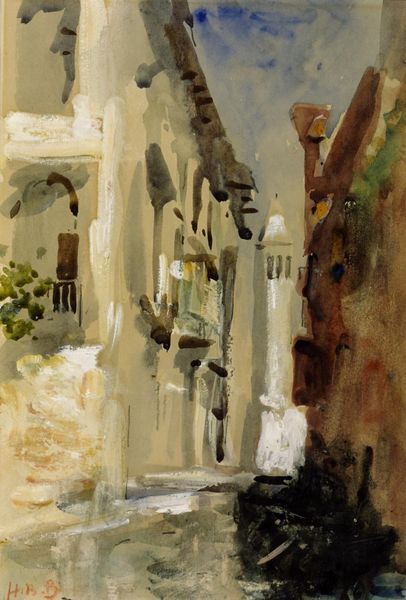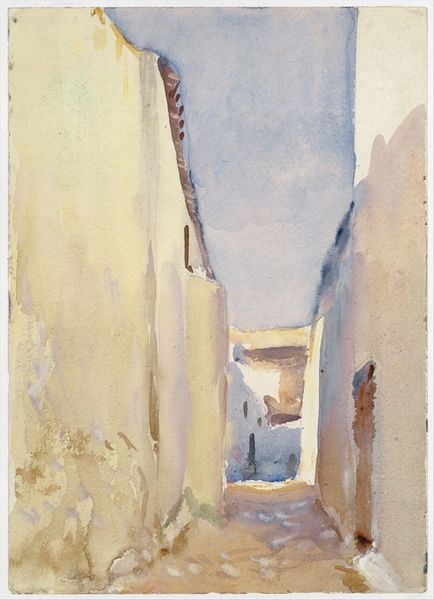
plein-air, watercolor
#
portrait
#
impressionism
#
impressionist painting style
#
plein-air
#
landscape
#
impressionist landscape
#
figuration
#
oil painting
#
watercolor
#
watercolor
Copyright: Public domain
Curator: We're now looking at Childe Hassam's watercolor from 1883, titled "Girl in a Doorway." It's a modest work, typical of his plein-air explorations, showing a young woman standing at the entrance to a cottage. Editor: My first impression is one of quietude, a domestic serenity. The light is soft, diffused, and the palette is very restrained – mainly creams, greens and greys. It's very…intimate. Curator: Intimacy is key. Hassam’s choice of watercolor perfectly suits the subject. The transparency of the medium allows for subtle gradations of light, reflecting the everyday life of the rural working class in late 19th-century Europe and America. Editor: Absolutely. But considering this through a gendered lens, it strikes me that the girl's position is liminal. She's in the doorway, neither fully inside nor outside. This evokes a sense of her societal position, perhaps constrained by domestic expectations of the period. What agency did she really have? Curator: A pertinent observation. The architecture almost frames her, presenting a sense of confinement. Yet, it could also be seen as a portrait of quiet strength and resolve. Remember that Hassam was active during a time when social norms surrounding women were beginning to shift and change. Editor: I see your point. But I also see that the light doesn’t particularly focus on the girl. In fact, she blends into the shadowed space of the doorway itself. This might be interpreted to indicate her comparative unimportance. As simply the 'girl in a doorway.' Curator: Or perhaps Hassam's use of a "hidden" female form encourages us to look beyond societal expectation for greater human complexity in art. He situates her existence at the edge of his painterly inquiry – is he urging the same on his audience? Editor: I’m not totally sure if I see it as intentional; perhaps he didn't focus on this narrative aspect, which, if so, is part of the socio-political issues he and others glossed over. Still, the question lingers: Whose stories do we tell, and how do we center them within art historical narratives? Curator: Indeed. Works like this act as cultural documents, triggering dialogue. Ultimately, Hassam's plein-air studies such as this watercolor provides insights not only into his artistic process but also, albeit in nuanced ways, into the sociopolitical backdrop of his era. Editor: A perfect illustration of art as a gateway, really – in this case, prompting critical dialogues on history, representation, and society's often silent figures.
Comments
No comments
Be the first to comment and join the conversation on the ultimate creative platform.
